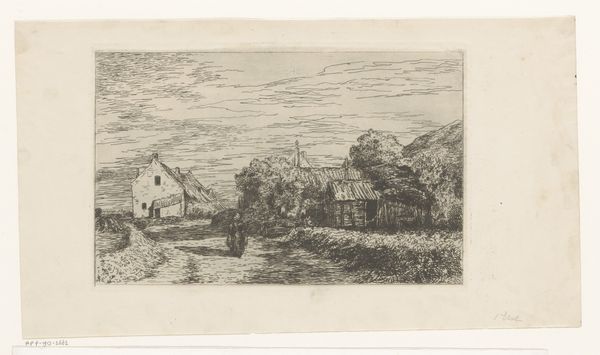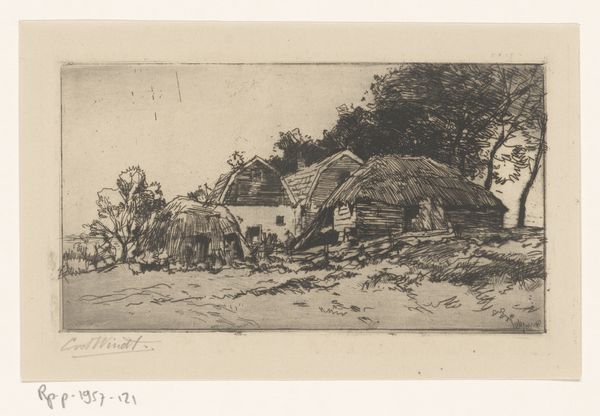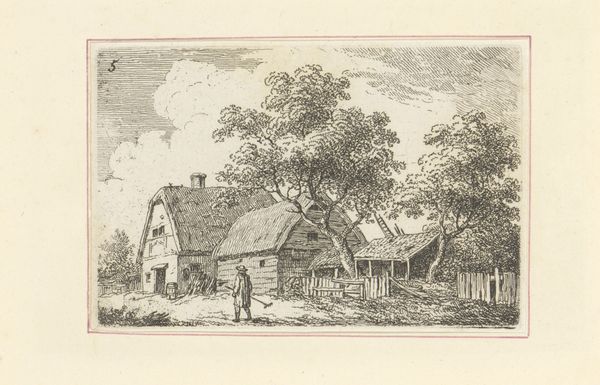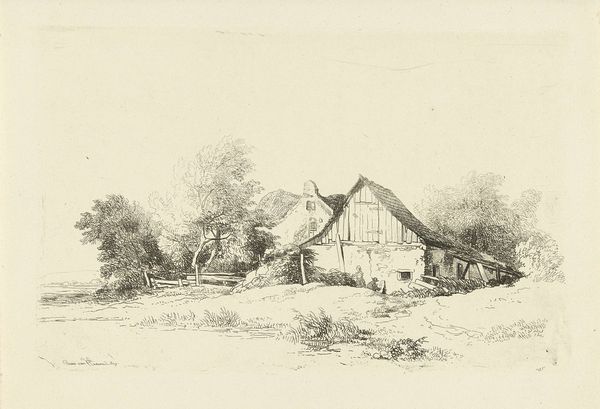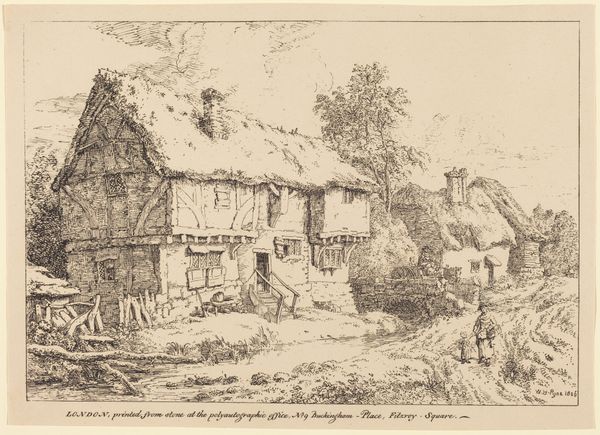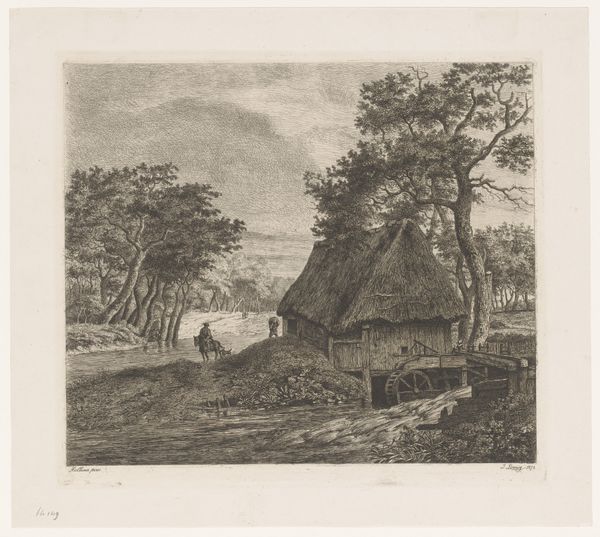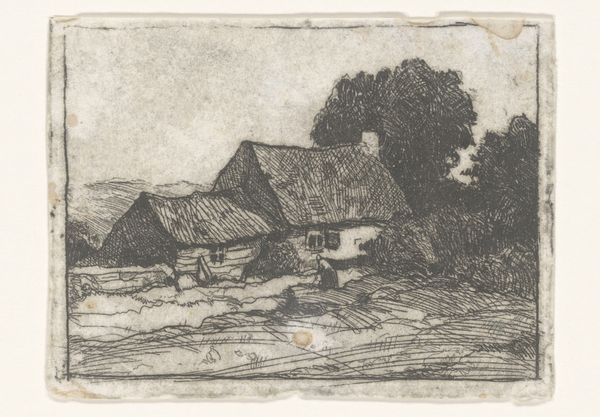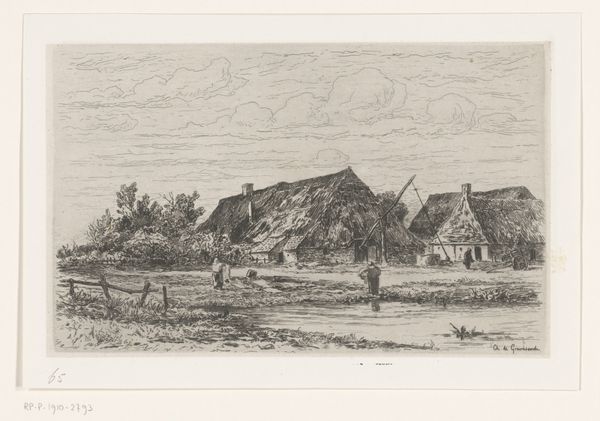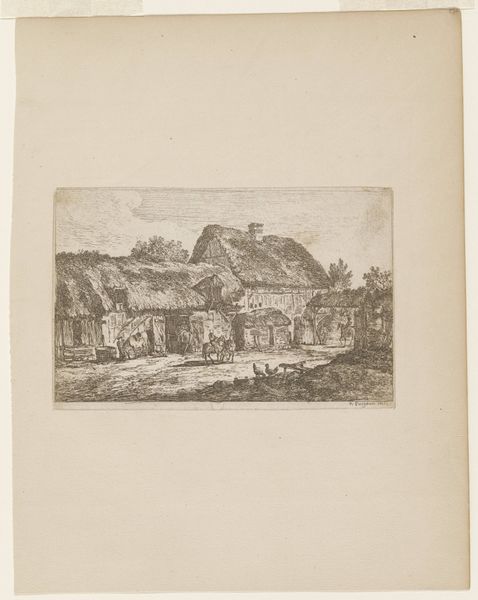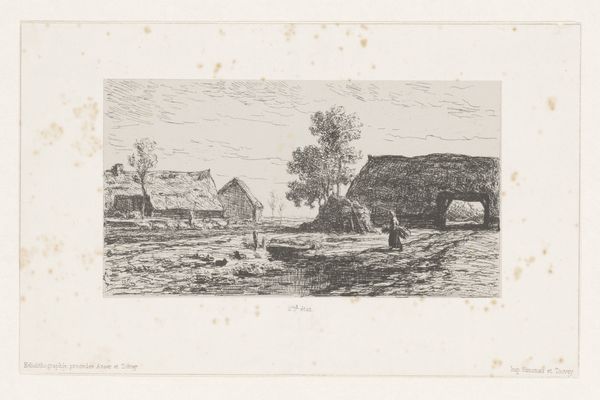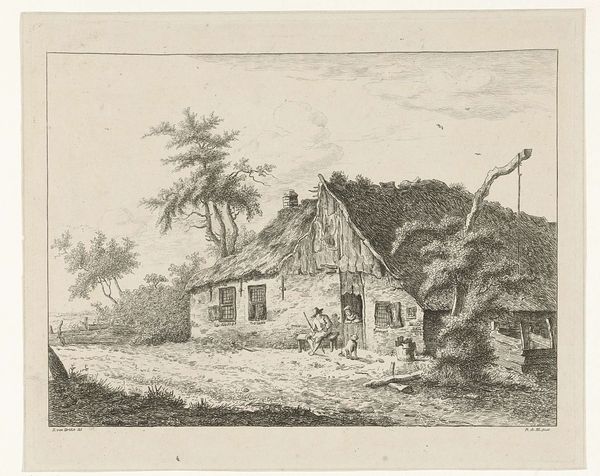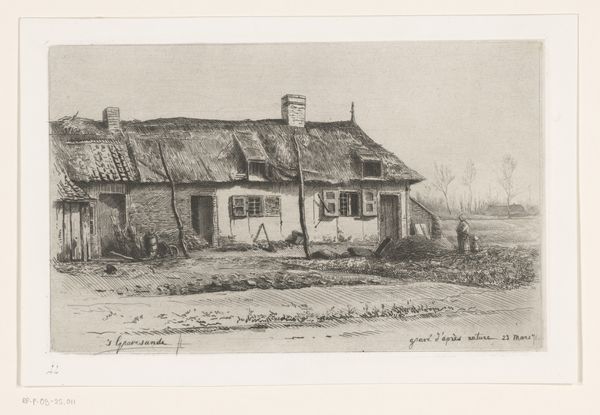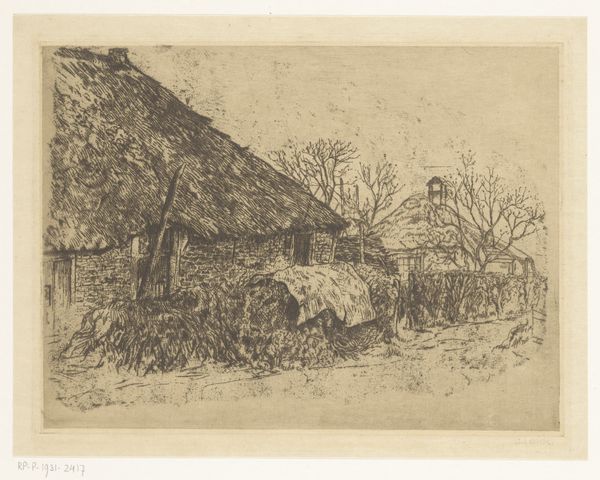
print, etching
#
pale palette
# print
#
etching
#
old engraving style
#
landscape
#
genre-painting
#
realism
Dimensions: height 116 mm, width 280 mm
Copyright: Rijks Museum: Open Domain
Curator: This etching from 1866 by Charles Jacque, titled "Landelijk huis met schapen en zittende figuren," presents a bucolic rural scene. What are your initial thoughts? Editor: There's a melancholic stillness about it, despite the presence of figures and livestock. The muted tones amplify the solitude, I think. The heavy, thatched roof of the farmhouse seems to visually weigh the scene down, anchoring it to the earth. Curator: Absolutely. Consider Jacque's mastery of line and tone here. Notice how he employs etching to create a delicate interplay of light and shadow, achieving remarkable textural detail in the thatch and foliage. This adds depth. Semiotically, these elements are coded as representations of simplicity. Editor: From a material perspective, it's intriguing. Etching, with its reliance on acid to bite into the metal plate, is a process that reflects both control and chance. The print is labor-intensive, revealing a slower mode of image-making. This challenges the idea of the artist as purely intellectual. Curator: Interesting point. The composition adheres to classical landscape principles, guiding the eye through the planes of depth. This calculated arrangement invites contemplation of nature's order and harmony—the aesthetic equivalent to the Romantic movement's yearning for connection with the pastoral, perhaps. Editor: However, the print’s likely affordability suggests broader consumption within a burgeoning middle class hungry for imagery romanticizing rural life while simultaneously detached from its labor realities. The subject matter thus embodies class assumptions of labor relations. Curator: That friction elevates the work, complicating it beyond mere representation. The muted palette—those pale grays and blacks—also influences the emotive impact of the scene. I am drawn to the artist's skill with value contrast; he subtly leads you into an era, creating its unique feel through tonality. Editor: Yes. Examining Jacque’s choice to reproduce it on paper, though, a somewhat democratized medium in comparison to a painting, we observe a decision potentially impacting access, cost, and even intended audience. His process shapes accessibility, altering social perception as paper is inherently mobile. Curator: By interweaving structure and materials, it unveils a nuanced vision of landscape, revealing so much depth! Editor: I agree—considering materials exposes not just the 'what' but profoundly, 'how' the era felt the landscape around it, impacting not only Charles Jacque, but us as well!
Comments
No comments
Be the first to comment and join the conversation on the ultimate creative platform.
